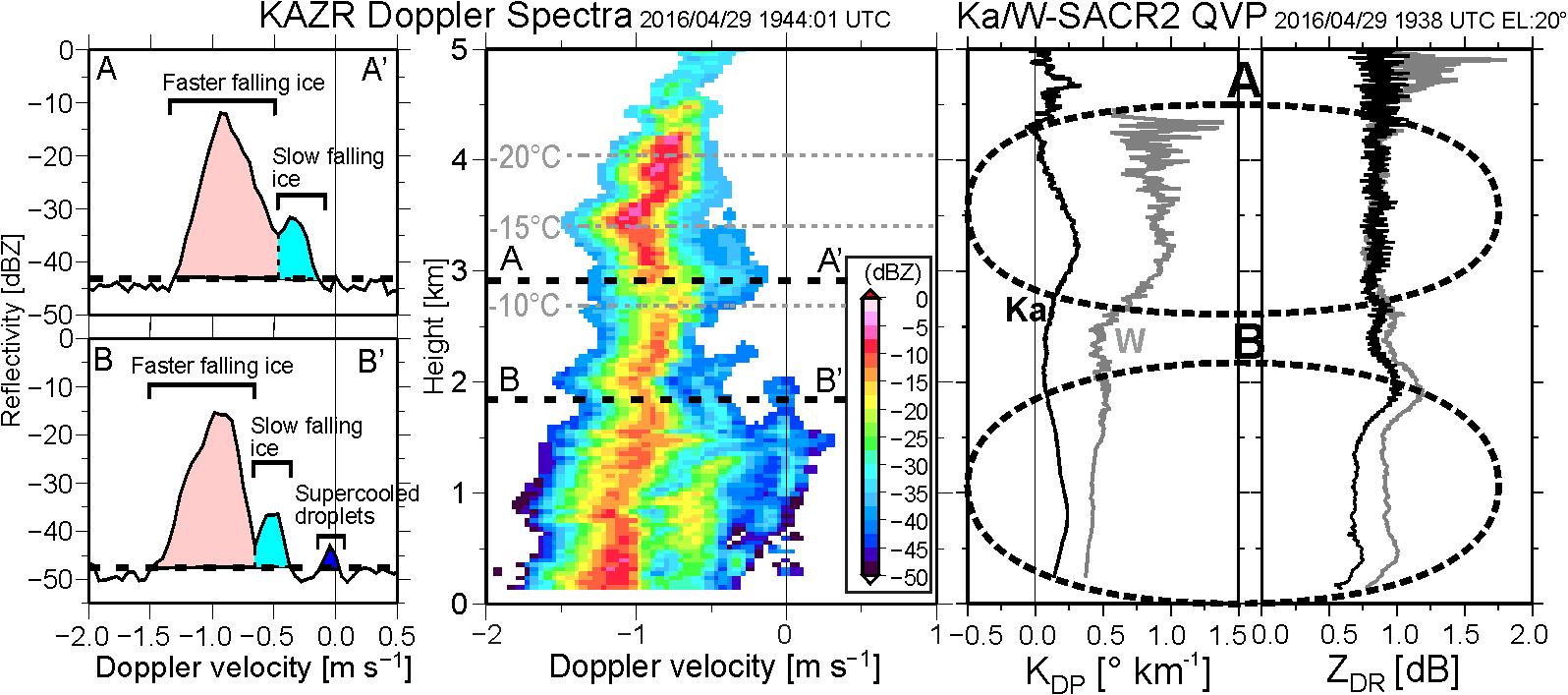Synergy between particle shape and fall speed from multi cloud radar measurements in the Arctic
Submitter:
Oue, Mariko — Stony Brook University
Kollias, Pavlos — Stony Brook University
Area of research:
Cloud Processes
Journal Reference:
Science
The study of arctic ice and mixed-phase clouds, which are characterized by a variety of ice-particle types in the same cloudy volume, is challenging research. This study illustrates a new approach to qualitative and quantitative analysis of the complexity of ice and mixed-phase, micro-physical processes in arctic deep precipitating systems. The approach uses the combination of particle fall speed information observed by Ka-band zenith-pointing radar Doppler spectra and particle shape information observed by Ka/W-band scanning radar polarimetric variables.
Impact
The joint analysis of the Doppler spectra peak properties and polarimetric radar variables can improve the interpretation of the radar measurements in regions where different types of ice particles and/or different phases are mixed. The analysis quantifies the contributions of different ice habits to the total values of radar reflectivity, differential reflectivity, and specific differential phase. The results will lead to better polarimetric estimation of the ice water content compared to earlier studies.
Summary
The KAZR at the Oliktok Point site observed multimodal Doppler spectra in deep cold precipitation systems, where locally generated, slower-falling particle populations are well separated from faster-falling populations in terms of Doppler velocity. Total reflectivity and mean Doppler velocity were calculated for each population from the Doppler spectra, and quasi-vertical profiles (QVPs) of polarimetric variables were calculated from Ka/W-SACR2 plan position indicator measurements by azimuthally averaging the variables at each height. The frequent occurrence of the multimodal Doppler spectra was observed in dendritic/planar ice growth layers, where the slower-falling particle populations contributed to an increase of differential reflectivity (ZDR), while an enhanced specific differential phase (KDP) was caused by both the slower- and faster-falling particle populations (A-A’ and region A in Fig. 1). Another area with frequent occurrence of multimodal Doppler spectra was in mixed-phase layers, where particle fall speeds were higher than those in the dendritic growth layer, and the enhancements of KDP and ZDR were weak, suggesting that compact, high-density, spherical particles produced by riming dominated and those with different sizes were mixed together (B–B’ and region B in Fig. 1). The joint analysis of the Doppler spectra and the polarimetric radar variables provides important insight into the microphysics of snow formation and allows the separation of the contributions of ice of different habits to the values of reflectivity and ZDR.


